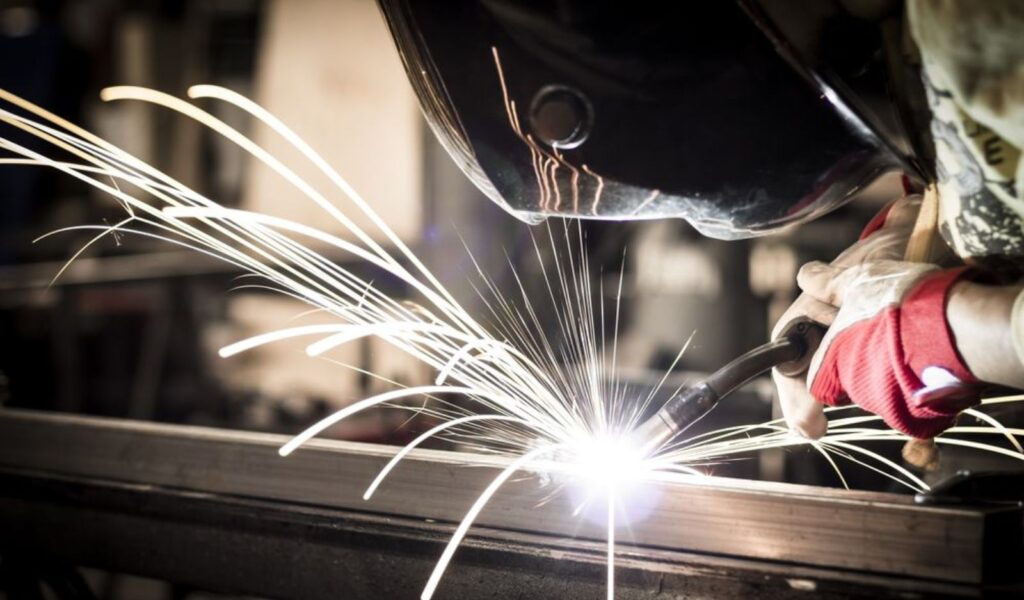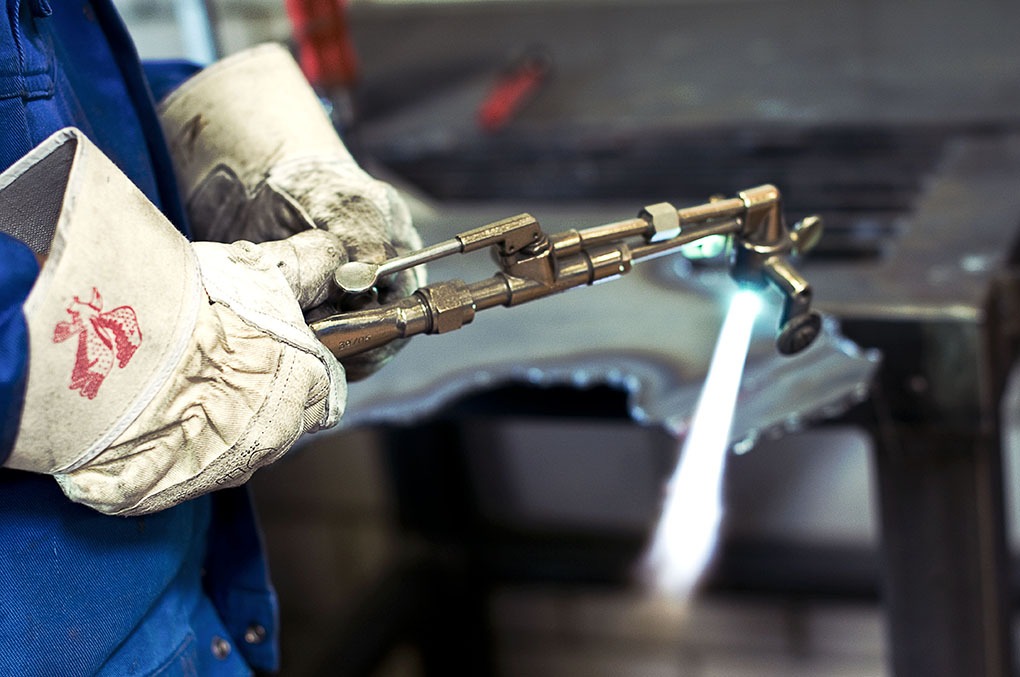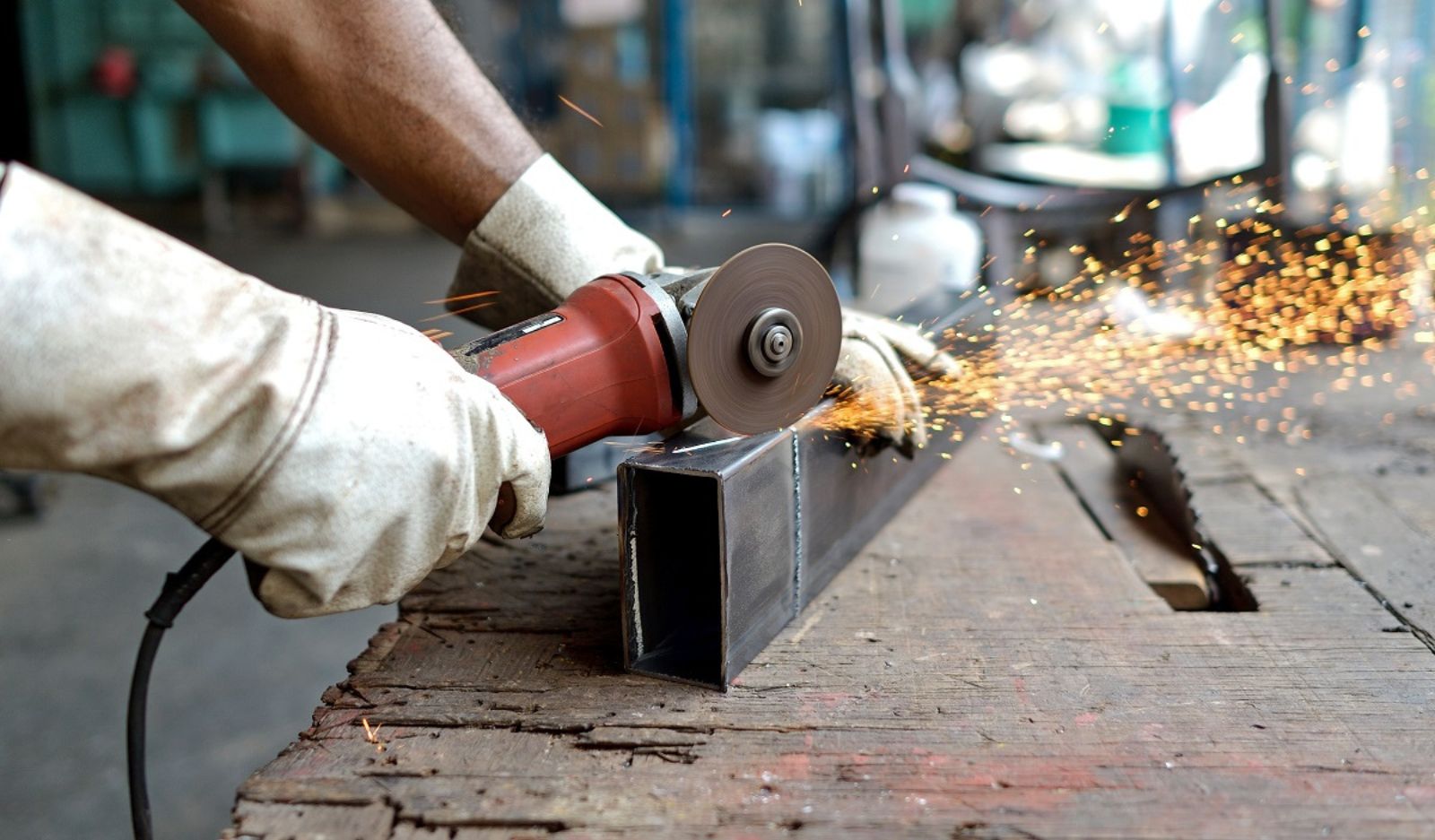Steel fabrication is arduous work. It requires skill and precision, a solid knowledge of physics and chemistry, and the precise application of some very complex machinery. While steel is a relatively malleable material, there are a few specialised tools of the trade which every fabricator needs on a day to day basis to do their job. To give a brief insight into the everyday life of a fabricator, here are some of the key tools of the trade for steel fabrication.

From guillotines to cranes to drills, every steel fabricator uses an array of equiptment each day to get the job done. Here are some of the top tools of the trade for steel fabrication.
Guillotine
The guillotine has a dark history dating back to the middles ages, with precursors going back even further. The type that steel fabricators use is little different to what you might imagine though. Also known as a ‘cropper’ or ‘punch and shears’, the guillotine is mechanically or hydraulically powered and is used to cut plates ready for fabrication. It functions by clamping the steel with a ‘ram’ then cutting it with a moving shear. Steel has an outstanding ‘shearability rating’ and requires much lower energy expenditure to cut than other metals.
Beam Line
Beam drill lines are used to drill and notch steel sections. They are extremely complex pieces of equiptment and provide much faster drilling solutions than manual techniques. They often integrate computer technology to precisely automate where to drill and notch holes in steel beams.

Guillotine – Image source
MIG and stick welders
Stick welding refers to manual arc welding that employs electrical currents to lay a weld. These can range from smaller pieces of equiptment that can be purchased from local hardware stores to much larger pieces of machinery. MIG, on the other hand, stands for Metal, Inert Gas and uses a wire-feeding ‘gun’ to flow a shielding gas over a weld puddle to deter atmospheric contamination and promote a strong weld.
Gas Axe
Oxy-fuel welding refers to a cutting process that involves fuel gases and oxygen to weld metals. Acetylene is the one of the most common fuels for oxy-fuel welding and is often the best choice for repairing and welding. A ‘gas axe’ the slang term for an oxyacetylene cutting torch that uses a mixture of oxygen acetylene to create an extremely hot flame that can cut thick steel sections.

Overhead Crane
Cranes are every bit as important for steel fabrication as the tools used for cutting and welding. Overhead cranes are commonly referred to as bridge cranes and differ from the machinery you see on top of skyscrapers. They consist of two parallel beam ‘runways’ with a moving ‘bridge’ to span the gap – a ‘hoist’ (the lifting mechanism of the crane) is attached to the bridge and is used to transport steel sections along the ‘runways’.
Quickie
Generally referred to as a ‘quickie’, a plate gas cutting machine is a moving device used to cut long lengths of steel with oxy-fuel. It is mainly made up of three key components: a torch unit used for cutting, a motorised carriage and a plate track. It is a versatile system that can be altered for different applications, for example using different types of oxy-fuel for different materials.
Though we use numerous tools to cut, welding, bend and transport steel, these are some of the most common you will find in and steel fabrication workplace.
If you’d like to find out more about steel fabrication or if you are considering steel for construction purposes and would like a professional opinion, we can help. Our team of experts have the experience and knowledge to answer any of your questions and will ensure that you find the best solution to suit your needs. To contact us today, simply call, fax, email for information or a steel fabrication quote, or drop by our Brookvale location.
